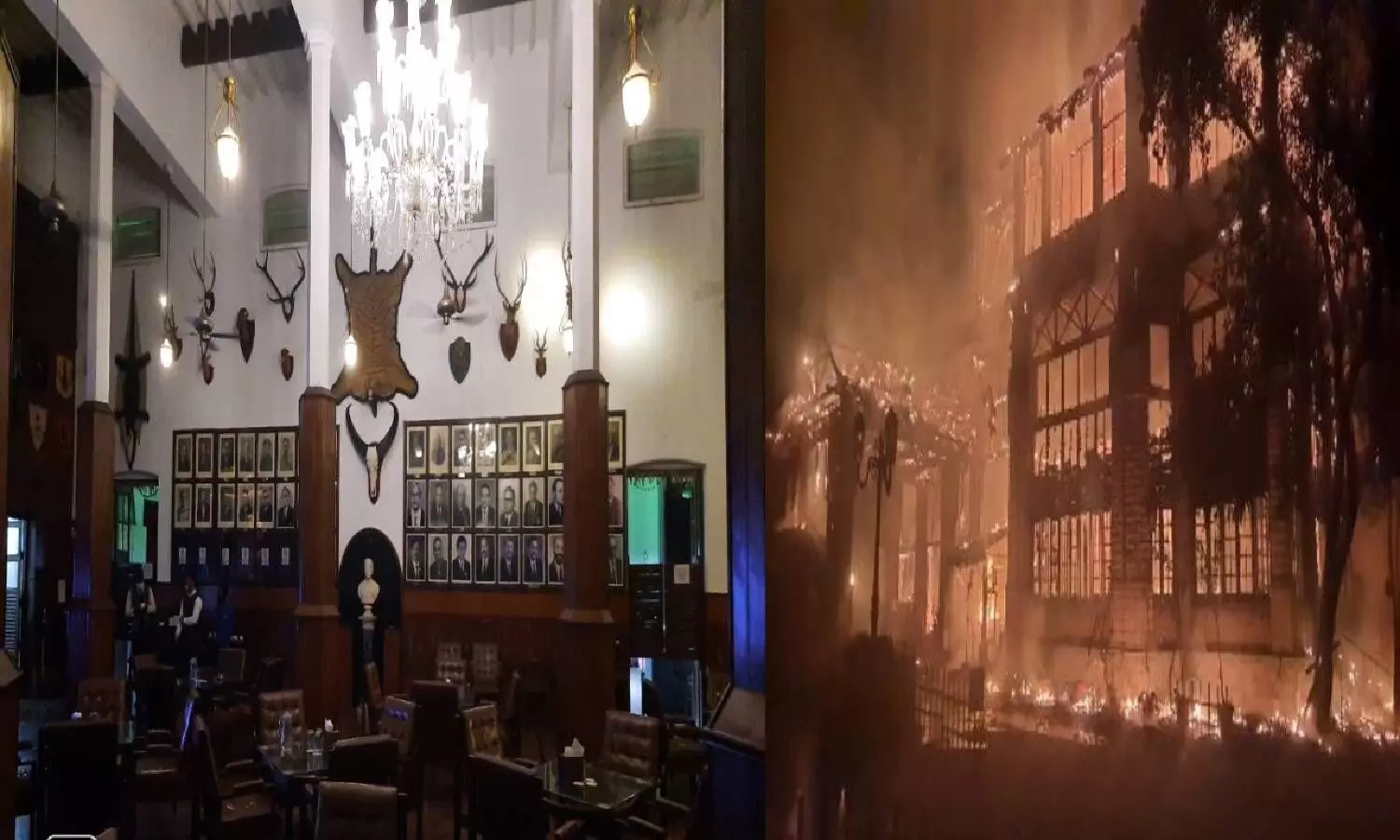A loss of six-decade-old memories: Mohan Guruswamy on Secunderabad Club
Established by the British in 1878, the Secunderabad Club is one of the five oldest clubs in India, the oldest club being the Bengal Club of Calcutta.
By Nimisha S Pradeep
Hyderabad: Author Mohan Guruswamy was shocked on hearing the news of the fire that gutted Secunderabad Club in the early hours of Sunday. Guruswamy has been visiting the club since his childhood days and has been a member for the last 50 years.
"It's not just the coming down of a building but the loss of six-decade-old memories," says Guruswamy who has lived in Secunderabad for years and knows every detail of the city.
Established by the British in 1878, the Secunderabad Club is one of the five oldest clubs in India, the oldest club being the Bengal Club of Calcutta. The club went through several name changes – the Secunderabad Public Rooms, the Secunderabad Garrison Club, the Secunderabad Gymkhana Club, and the United Services Club – before finally choosing the name Secunderabad Club.
Located on a lush green, 22-acre campus, the club's century-old Main Club House, carefully and aesthetically maintained, has been given heritage status by the Hyderabad Urban Development Authority (HUDA). Some of the trees growing on its campus are over 100 years old and still proudly play host to a variety of chirping birds, making the club an oasis of calm in the middle of the hustle-bustle of the busy city.
Guruswamy recalls how the lives of the people of Secunderabad revolved around the club 50-60 years ago. "It had everything – restaurants, bar, shopping complex, health club, gym, petrol pump, and whatnot. It was a world by itself," says Guruswamy.
Historian Pankaj Sethi adds, "It's a tragic loss for the city, the heritage of the city gutted down."
He goes on to describe how the club post-Independence served as a meeting point for people to come and relax. "For a long time before the arrival of theatres, parks, and multiplexes, this was the go-to place for people," says Sethi. It is important to remember that in the 1950s, there were very few spaces like this for people to rest or chill.
Sethi is not a member of the club but has attended several discussions at the club. "It was here where ideas were exchanged," he says.
Besides, it was also one of the few clubs that had sports facilities. "It had a functioning cricket ground which was a rarity in those times," says Sethi and adds, "It was a symbol of how the city was, how it developed...it's a reflection of the cosmopolitan nature of Secunderabad. Secunderabad developed differently as a commercial city."
The club also housed a huge library, says Sethi.
Before the British rule, the club, situated in Thokatta village, was Nawab Salar Jung's hunting lodge. "Apparently, there was a lake near the club with a single palm tree atop a hillock. It was then called One Tree Hill but is now known as the Jubilee Bus Stand," says Sethi.
The story goes that the club was situated in a small run-down building. When the Resident (a senior official in charge of the princely states during the British era) wanted to come to the club Salar Jung offered his hunting lodge as a fitting building to house the club where the Resident could come and spend his evening.
During the British era, it served as a club where British officials and army people came to relax. Up until 1947, only Britishers were allowed to be presidents of Secunderabad Club, and only a handful of high-ranking Hyderabad nobility was offered membership in the club. "It was barred for Indians for a long time. Some of the natives even started a similar club, the Deccan Club in Marredpally," says Sethi.
Colonial style of architecture
"It (the club) has a mix of colonial architecture with Mughal openness. It didn't have closed halls," points out Guruswamy.
Guruswamy calls it the "hall of memories, a grandeur from the past". Remembering the high ceiling, and chandeliers, he says, "That elegance cannot be recreated."
Sethi adds that efforts should be taken to try and restore it.
The Secunderabad Club is possibly the only club in India to have its own printing press and probably one of the few clubs in the world which has its own sailing annex.